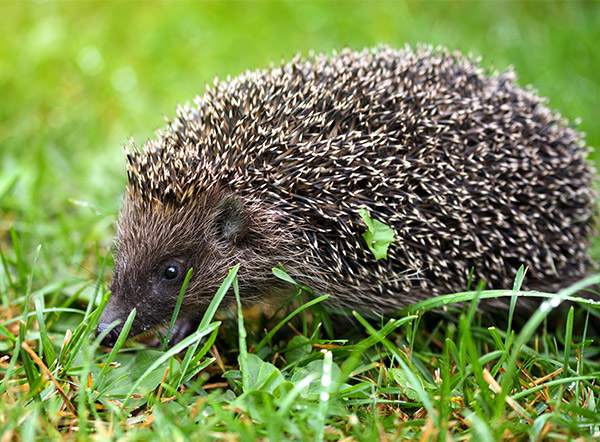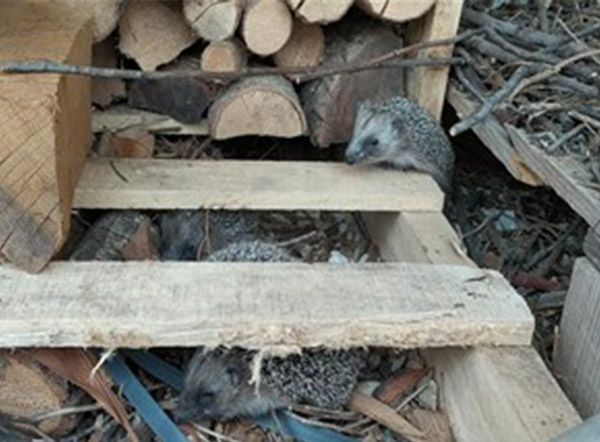binomial nomenclature
common name
Erinaceus europaeus
Hedgehog
It’s a small insectivorous mammal (not a rodent, be careful!), from 22 to 30 cm long and with a weight varying from 300 to 1500 grams, depending on the age and the season.
The hedgehog has a grey-brown fur, it’s unmistakably characterized by a coat of spines, covering front, sides and back. An adult hedgehog is covered by 6.000-8.000 spines, striped black-beige-white, about 2 cm long. They are nothing more than hairs, modified to defend against predators: when in danger, the hedgehog curls up and immobilizes, becoming a “ball” of spines. It is almost nocturnal, when it can find more prey, and gets to cover up to 3 km to look for food.

So, what does he eat?
It feeds on earthworms, millipedes, slugs, snails, beetles and caterpilars, rarely on small rodents and eggs of birds brooding on the ground.
And in winter… Let’s sleep!
With the approaching of the cold season, the hedgehog no longer finds food, so the best solution is to go into hibernation: in autumn it takes refuge in a den under piles of branches and dried leaves, minimizing its body activity and thus saving energy. The important thing is that before entering this phase of "pause", he was stuffed and ate food particularly nutritive, since during hibernation he may lose almost 20% of his body weight.
The habitat
The hedgehog visits different kinds of environments, both open (like the countryside) and rich of vegetation (such as woods and bushy areas). It is particularly easy to observe it even in vegetable gardens and lawns, so it will definitely be a guest in your wild garden! The den can be built under the piles of branches that are sometimes left after pruning, or under the wood for the fire piled up covered, sometimes even under anything that gives them a shelter. The shelters created specifically for them in the garden, are very appreciated (see laboratory sheet "Let’s build a shelter for the hedgehog").

Fun fact
The female can give birth up to 10 small hedgehogs.
During the summer, a hedgehog can change the den up to 20-30 times. When he is looking for food, he makes characteristic sounds, like puffs and sneezes. During the courtship period, strange noises are emitted, both by the male and the female. Generally, the hedgehog can blow, pant, whistle and shout to express different emotional states and needs.
Beware… crossing hedgehogs!
The existence of an increasingly dense road network, makes particularly dangerous the crossing of those animals that need to move looking for food, for a new lair and for a new partner in the mating season. The hedgehog too, which as mentioned above can cover up to 3 km per night, falls among these. The chance of getting hit for him is very high, because when he sees the lights of a car, instinctively he does not run away, but rolls into a ball. This is the technique he uses to protect himself from predators, which unfortunately is not fruitful in front of a car. When the traffic allows it, if you see a hedgehog about to cross or that is already crossing, it should be picked up gently and placed away from the road as much as possible.